- News
- Reviews
- Bikes
- Components
- Bar tape & grips
- Bottom brackets
- Brake & gear cables
- Brake & STI levers
- Brake pads & spares
- Brakes
- Cassettes & freewheels
- Chains
- Chainsets & chainrings
- Derailleurs - front
- Derailleurs - rear
- Forks
- Gear levers & shifters
- Groupsets
- Handlebars & extensions
- Headsets
- Hubs
- Inner tubes
- Pedals
- Quick releases & skewers
- Saddles
- Seatposts
- Stems
- Wheels
- Tyres
- Tubeless valves
- Accessories
- Accessories - misc
- Computer mounts
- Bags
- Bar ends
- Bike bags & cases
- Bottle cages
- Bottles
- Cameras
- Car racks
- Child seats
- Computers
- Glasses
- GPS units
- Helmets
- Lights - front
- Lights - rear
- Lights - sets
- Locks
- Mirrors
- Mudguards
- Racks
- Pumps & CO2 inflators
- Puncture kits
- Reflectives
- Smart watches
- Stands and racks
- Trailers
- Clothing
- Health, fitness and nutrition
- Tools and workshop
- Miscellaneous
- Buyers Guides
- Features
- Forum
- Recommends
- Podcast
review
£1,999.00
VERDICT:
Fast, race-orientated road bike with precise handling and class-leading efficiency
Weight:
8,300g
Contact:
www.giant-bicycles.com
At road.cc every product is thoroughly tested for as long as it takes to get a proper insight into how well it works. Our reviewers are experienced cyclists that we trust to be objective. While we strive to ensure that opinions expressed are backed up by facts, reviews are by their nature an informed opinion, not a definitive verdict. We don't intentionally try to break anything (except locks) but we do try to look for weak points in any design. The overall score is not just an average of the other scores: it reflects both a product's function and value – with value determined by how a product compares with items of similar spec, quality, and price.
What the road.cc scores meanGood scores are more common than bad, because fortunately good products are more common than bad.
- Exceptional
- Excellent
- Very Good
- Good
- Quite good
- Average
- Not so good
- Poor
- Bad
- Appalling
The Giant TCR Advanced 3 is a fast, precise road bike that offers a smooth ride. We like it a lot.
We're a caring, sharing bunch here at road.cc, so rather than just give you a standard bike review, this time round we thought we'd write this one in response to the questions you asked and the comments you made when we published our Just In on the Giant a few weeks ago. It might work out well, it might be an absolute disaster but we'll give it a whirl and see what happens...
Wors asked: 'Can I ask what owners think of it comfort wise?'
Rowanb97 said: 'I don't own one but rode one for a weekend and it's very comfortable. A Fizik Arione saddle and a very nice carbon frame and fork make the ride a joy.'
Ray Heisey, who bought a Giant TCR Advanced 2 in January, added: 'The bike is fast, responsive, quiet and comfortable.'
We'd agree that the TCR Advanced 3 is pretty comfortable. It's not the most forgiving bike ever but it's nowhere near as harsh as that hugely oversized front end might lead you to expect. It actually provides a smooth, well-mannered ride.
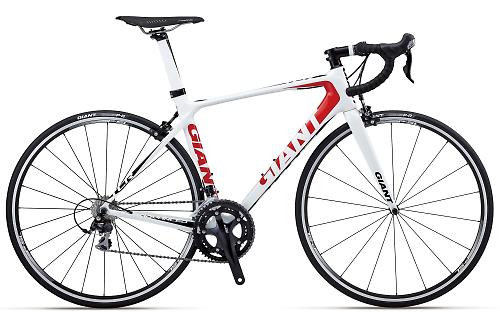
All of Giant's road bikes are built to a compact geometry. As you'll doubtless know – but we'll repeat anyway, just in case you don't – Giant slope the top tube down towards the seat tube. That reduces the size of the frame triangles, the idea being to save weight and increase lateral stiffness.
A compact geometry also results in more of the aero seatpost extending out the top of the seat tube than would be the case with a standard design. All other things being equal, that provides a little extra damping over irregular Tarmac. Whether that's what is responsible or not we couldn't say for sure, but the Advanced 3's ride quality is good. It's not a soft ride but you'll be happy enough to rack up the big miles without coming home sore from getting repeatedly kicked in the butt.
As Rowanb97 suggests, the saddle helps on that score. Even though I know it's massively popular, I haven't been the biggest fan of Fizik's Arione in the past but it's finally starting to win me over. The manganese-railed version fitted to the Advanced 3 felt great throughout testing. I still don't understand why Fizik extend the rear section so far. I mean, no one actually sits back there, do they? Whatever; the saddle felt comfy so I'm not complaining.
The other factor that always has a big effect on comfort is your ride position. We have the XL (58.5cm) model of the Advanced 3, the largest size Giant make. It comes with a lengthy 60.5cm top tube and a 20cm head tube.
Those are exactly the same dimensions that Giant use on their TCR Advanced SL pro-level race bikes, so you are forewarned that this is an aggressive setup. Don't be misled by the 20cm head tube, by the way; the XL bike is for big blokes. I'm 1.90m tall and would have been better off with a size smaller.
Anyway, the point is that although you get 3.5cm of spacers underneath the stem, the Advanced 3 is designed with a racing geometry. As long as that's what you're expecting, you'll be happy with the ride position.
As Ray Heisey said, the Advanced 3 is also fast and responsive, and we'd put that largely down to the frame's stiffness. Just looking at the bike, you can tell that rigidity was top of the project checklist.
The front end is massive. Lots of manufacturers have moved away from standard 1 1/8in headset bearings so that they can beef up the size of the head tube and fork steerer for increased stiffness. This year Giant have introduced what they're calling their OverDrive 2 standard, using a 1 1/4in bearing at the top and a 1 1/2in bearing at the bottom – which is the same as Canyon, for example, use on many of their bikes.
The looks might take some getting used to but according to Giant, the OverDrive 2 design provides up to 30% more torsional stiffness than their previous OverDrive standard (1 1/8in and 1 1/4in) for greater precision and control. We'd say that's the single biggest defining characteristic of this bike. That front end just doesn't waver.
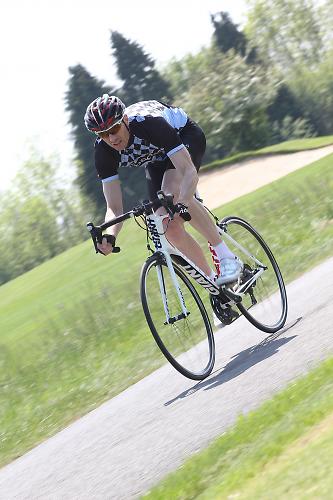
Sling the Advanced 3 lightning-fast through the turns and lean it over hard and it stays pin sharp and accurate. Haul on the brakes and there's not a hint of dive. Even when 100kg of Big Dave endo-ed the Advanced there was zero flex... and if it can handle that kind of abuse it can handle pretty much anything.
With oversized tubing everywhere, the rest of the frame holds equally firm. The down tube is a huge, square-edged affair and the bottom bracket area is built solidly too, housing a press-fit BB from Shimano.
The result is a frame that feels amazingly stiff under hard pedalling. Powerful riders in particular will love the fact that even out of the saddle sprints fail to induce any detectable sway through the centre of the bike. If you're after efficiency, the Giant certainly provides it, every morsel of energy that you can summon up getting converted directly into speed.
Rookybiker pointed out that: "Giant uses a lower-spec carbon fibre for the Composite frames. A TCR Composite frame weighs less than a TCR aluminum frame and more than a TCR Advanced frame.'
That's true. Giant use Toray 600 carbon fibre for their Composite bikes and Toray 700 for their Advanced frames, such as we have here. Then they use Toray 800 for their high-end Advanced SL bikes. The biggest difference between them is the weight for a given level of stiffness, each grade a little lighter than the previous one.
Giant weave the carbon fibre into cloth in their own composites factory and then mould the front triangle as a single piece. They then join it to the chainstay/seatstays section that's produced separately.
Speaking of the seatstays, Giant have tweaked the design compared to the TCR Advanced that we reviewed last year. They now remain as two separate entities all the way up to the seat tube rather than merging at the brake bridge, saving a little weight without forfeiting stiffness.
Various tweaks and changes in the layup mean that the Advanced frame is actually over 100g lighter than last year's model.
Mooman16 said: "The internal cable routing is pretty neat and tidy. The RideSense sensor works really well with my Garmin. Just don't be a numpty like me by wasting a half hour adjusting the wheel and cadence magnets wondering why nothing seems to work. You have to take the sensor out and then remove the plastic seal over the battery. Problem sorted.'
Last year's TCR Advanced had external cables but Giant have brought them inside for 2012. The rear brake cable heads backwards through the top tube while the gear cables enter the frame at the front of the head tube, the one for the rear mech emerging towards the end of the driveside chainstay. As well as tidying up the frame a little, this allows Giant to use the same frame for the Advanced 0 which comes with Shimano Ultegra Di2 electronic shifting.
In terms of performance, internal cabling makes little difference although it does reduce the possibility of contamination from water and road grime. You just need to be a bit more careful when it comes to maintenance. Fitting a new cable can be a nightmare if you don't follow the right procedure.
The RideSense sensor that Mooman16 refers to is a wireless computer sensor that's housed on the non-driveside seatstay. It's ANT+ compatible so you just fit magnets to the wheel and crankarm and it'll send speed and cadence info to a computer that uses the same system - a Garmin, for example. It's a handy piece of integration that, like the internal cabling, helps keep the bike neat.
dreamlx10 said: "I have the TCR Advanced frame from 2010, built up with Campag Chorus and Ambrosio/Record wheels. Very nice bike to ride. I would buy another one tomorrow, preferably the TCR Advanced SL with Record groupset.'
If you wanted that combo, like dreamlx10, you'd need to build it up yourself because that's not an option Giant offer.
The Advanced 3 that we have here comes with a full 105 groupset – 105 being the third tier Shimano road option after Dura-Ace and Ultegra. We're never quite sure which of Shimano's groups offers the best value for money but 105 certainly makes a strong claim. It offers a similar level of performance to its more expensive stablemates with a relatively small weight penalty.
You often get at least some Ultegra components on a two grand bike but you're clearly investing most of your cash in that Advanced frame. You could buy a bike with a higher component spec for the same money, but chances are you're going to take a hit on the frame. You pays your money and you takes your choice. Given the option, we'd definitely go for the better frame and upgrade any components we didn't like when they wear out.
Anyway, the 105 kit works really well. The shifters are comfortable and easy to operate, and the brakes are punchy. The chainset you get here is a 52/39T model and it's matched up to a 10-speed 12-25T cassette. That suits the racy character of this bike but I guess you might prefer a compact chainset, particularly if you ride in a hilly area. If so, you're out of luck. The Advanced 2 comes with a mechanical Ultegra groupset and the Advanced 0 comes with Ultegra Di2, both with 53/39T chainrings.
The Advanced 3 climbs well even without a compact. Hitting the scales at 8.3kg (18.26lb), it's a reasonable weight rather than a featherweight but that frame stiffness I've banged on about means it's solid when you get up on the pedals for the steep stuff. Giant's own alloy stem and bars help here, holding perfectly steady when others might twist.
Niallf said: "Whilst I was at first considering a wheel upgrade to race on, the Giant wheels that come with the package seem to be doing the job so I may not bother.'
Ah yes, Niallf, we're glad you mentioned the wheels because they're new. Giant have been working with DT Swiss to develop their own range of wheels for both their own bikes and as an aftermarket range. These SL1s come with 6061 alloy rims, forged 6000-series alloy hubs and DT Champion stainless steel spokes – 18 at the front, 24 at the rear.
They've spun smoothly on their sealed bearings throughout testing and they've remained true, which is always a good start. Weighing in at 1,775g the pair, they're not mega-light but they're an okay weight – roughly similar to a pair of Mavic Aksiums, for example. They lack a little energy maybe, but they're well built and the double-walled rims mean they don't flex about.
I'd upgrade them in time to something in line with the high quality of the frameset, but they do a decent enough job and they're big on reliability so there's no particular hurry.
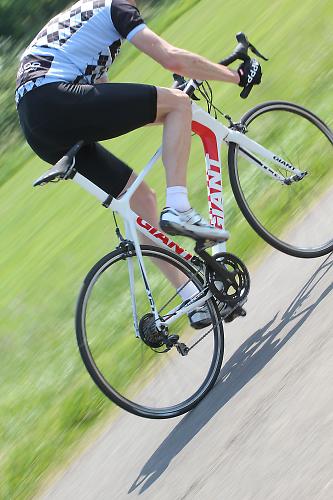
The same isn't true of the black spoke protector. If this were my own bike, it would be off there in two minutes flat. I don't care if it's practical, I'm with Mooman16 on this. He said: "The black plastic disc between the cassette and the spokes is just plain ugly... once I need to change my cassette, the disc will be consigned to the same circular filing cabinet used to store the bell.'
To sum up, the TCR Advanced 3 is one of the stiffest and most efficient bikes we've ridden in its price band. It's solid when you put in the power and its tracking is superb however fast you ping it through the corners. Some riders would doubtless prefer a bit more give in the frame for a softer ride but it's still a pretty comfortable setup. Above all, this is a race-orientated machine with a competitive nature in its blood.
Verdict
Fast, race-orientated road bike with precise handling and class-leading efficiency.
road.cc test report
Make and model: Giant TCR Advanced 3 2012
Size tested: XL
About the bike
State the frame and fork material and method of construction. List the components used to build up the bike.
Frame Advanced-Grade Composite
Fork Advanced-Grade Composite, Full-Composite OverDrive 2 Steerer, 1 1/4-1 1/2in bearings
Handlebar Giant Connect SL, 31.8
Stem Giant Contact, OverDrive 2
Seatpost Giant Vector Composite
Saddle Fizik Arione with manganese Rails
Shifters Shimano 105, 20 speed
Front derailleur Shimano 105
Rear derailleur Shimano 105
Brakes Shimano 105
Brake levers Shimano 105
Cassette Shimano 105 12-25
Chain Shimano 105
Chainset Shimano 105, 39/52
Bottom bracket Shimano, Press Fit
Wheels Giant P-SL1 WheelSystem
Tyres Giant P-R3, Front and Rear specific, 700x23mm
Tell us what the bike is for, and who it's aimed at. What do the manufacturers say about it? How does that compare to your own feelings about the bike?
Giant use T-700 carbon fibre. They say, "T-700 raw composite material is painstakingly woven in Giant's own composite factory (a step no other major manufacturer undertakes), then handcrafted into framesets using Giant's advanced monocoque construction technique. The process produces extremely light, stiff and compliant framesets."
Giant say this about their OverDrive 2 fork steerer/head tube design: "Oversize headset bearings and a tapered steerer tube work in harmony to offer unprecedented steering performance with no additional weight. Both road and mountain versions feature massive 1 1/4-inch top and 1 1/2-inch bottom bearings.
"Compared to the already stiff OverDrive system, OverDrive 2 provides up to 30 percent more torsional steering stiffness. This huge leap forward translates into industry-leading steering precision. Whether you're sprinting for the finish or cornering hard in the most demanding conditions, you can ride with more power and confidence."
Frame and fork
Overall rating for frame and fork
9/10
Tell us about the build quality and finish of the frame and fork?
Very good quality throughout.
Riding the bike
Was there any toe-clip overlap with the front wheel? If so, was it a problem?
None in the XL size.
Rate the bike for efficiency of power transfer:
9/10
The frame stiffness means this is a very efficient bike.
Rate the bike for acceleration:
8/10
It's not the lightest bike at this price but it's direct.
Rate the bike for sprinting:
8/10
Rate the bike for high speed stability:
8/10
Rate the bike for cruising speed stability:
8/10
Rate the bike for low speed stability:
8/10
Rate the bike for flat cornering:
9/10
Rate the bike for cornering on descents:
9/10
Rate the bike for climbing:
8/10
The drivetrain
Rate the drivetrain for performance:
8/10
Rate the drivetrain for durability:
8/10
Rate the drivetrain for weight:
8/10
Rate the drivetrain for value:
8/10
Wheels and tyres
Rate the wheels and tyres for performance:
8/10
Rate the wheels and tyres for durability:
8/10
Rate the wheels and tyres for weight:
8/10
Rate the wheels and tyres for comfort:
8/10
Rate the wheels and tyres for value:
8/10
Controls
Rate the controls for performance:
8/10
Rate the controls for durability:
8/10
Rate the controls for weight:
8/10
Rate the controls for comfort:
8/10
Rate the controls for value:
8/10
Your summary
Did you enjoy riding the bike? Yes.
Would you consider buying the bike? Possibly, if only for the exceptional frame.
Would you recommend the bike to a friend? Yes, especially to someone after efficiency, even more so if they were a powerful rider.
Rate the bike overall for performance:
8/10
Rate the bike overall for value:
8/10
About the tester
Age: 41 Height: 190cm Weight: 75kg
I usually ride: My best bike is:
I've been riding for: Over 20 years I ride: Most days I would class myself as: Expert
I regularly do the following types of riding: time trialling, commuting, club rides, sportives, general fitness riding,
Mat has been in cycling media since 1996, on titles including BikeRadar, Total Bike, Total Mountain Bike, What Mountain Bike and Mountain Biking UK, and he has been editor of 220 Triathlon and Cycling Plus. Mat has been road.cc technical editor for over a decade, testing bikes, fettling the latest kit, and trying out the most up-to-the-minute clothing. He has won his category in Ironman UK 70.3 and finished on the podium in both marathons he has run. Mat is a Cambridge graduate who did a post-grad in magazine journalism, and he is a winner of the Cycling Media Award for Specialist Online Writer. Now over 50, he's riding road and gravel bikes most days for fun and fitness rather than training for competitions.
Latest Comments
- ChasP 3 sec ago
It's a problem with all tyres because of the changing etrto standards. It wasn't that long ago that road tyres were designed to fit a 13mm internal...
- hawkinspeter 18 min 48 sec ago
However, their story does make sense with the plate supposedly standing for "Number one for the GAS" where "The Gas" is a common description used...
- lukebarog 30 min 9 sec ago
I experienced the same. They have a sizing chart on their website which looks really accurate, gives the widths in millimeters for all the...
- anotherflat 36 min 37 sec ago
I cannot see how the type of cycle lane has any bearing on cars pulling out in front of you....
- DanaColby85 41 min 50 sec ago
Here in York, at the city centre's recycling facility in James St, we're lucky to have a special ride-in area for cyclists....
- Louis Wells 1 hour 35 min ago
it would be funny if a judge could ban the passenger from driving (if licenced) and give them an asbo preventing them form being a passenger in a...
- mark1a 2 hours 17 min ago
Posting them here in the comments six times a day is just excessive anyway.
- Creakingcrank 2 hours 53 min ago
I use a cheap motorcycle dashcam on my e-bike (~£100 for 2 cameras and a common recording box). Comes with a wired remote that I don't bother with....




















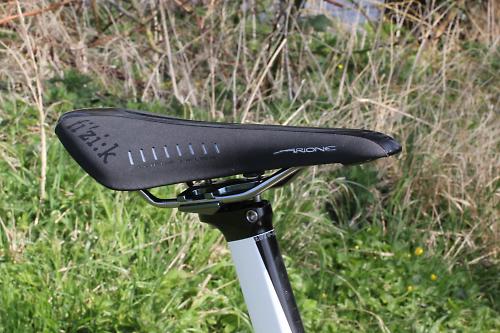

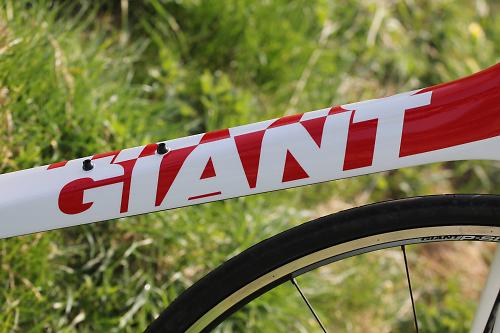
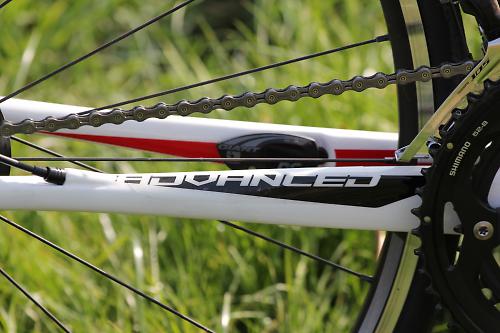
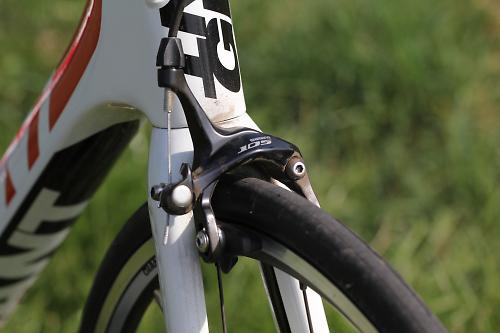
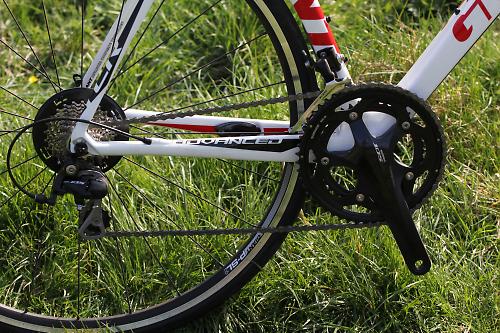

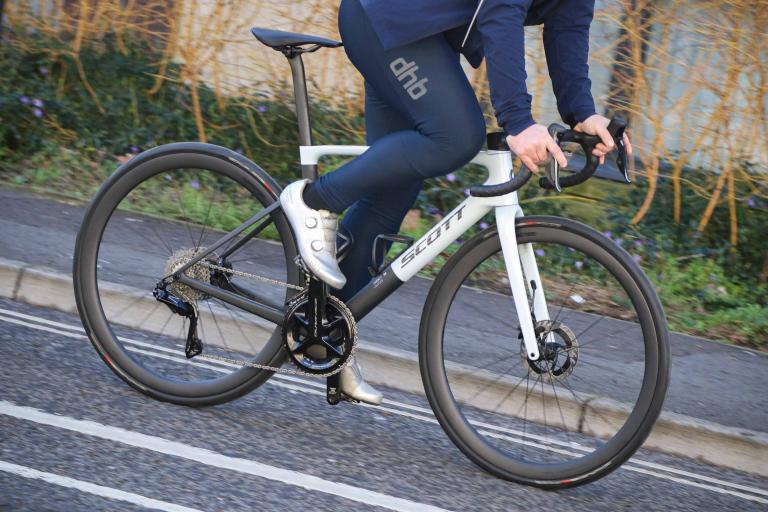
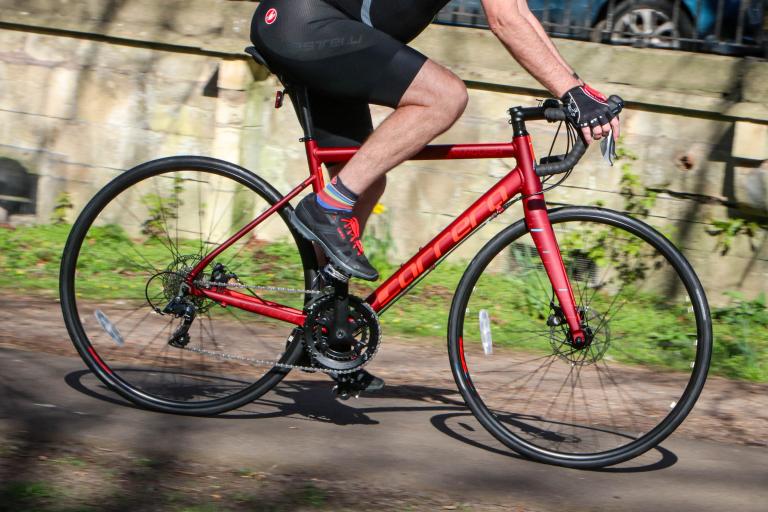


Add new comment
15 comments
I demo'd a advanced sl3 yesterday to answer my own question. All I can say is WOW, this bike is awesome, it goes like the wind! Comfort wise, I did 120 miles and felt nice and fresh afterwards. I took it back to the shop and they asked if I wanted to borrow a defy, to compare. No need I have made my mind up! And 120 miles and 5500ft of climbing all in the 53 tooth ring
Regarding bike wts; make sure you are using the same scale for all bikes you are weighing. Shop A's scale is going to be different then Shop B's. Unless the scales is traceable to NIST (USA) or your nations office of wts and standards there is going to be a accuracy question. I think this is why manufacturers do not always publish weights, 2 different scales =2 different weights. Less is more, it's amazing the cost difference between a 17# bike and a 16# one, approx $1000.00. I'm saving up for some < 1400g hoops. Best of everything to you all. Come to Florida USA to ride. We ride 12 months out of the year. We're Flatlanders, big crank country.
Differences in frame weight are a minute part of the whole and lightest is not best. I'd argue that sizing/bikefit and the effectiveness of the key components attached to it are far more pertinent (never mind the weight and effectiveness of the biggest component - the one on top of the saddle).
As for relative stiffness, while some mag reviews wax lyrical and still leave me in the dark, a bunch of numbers from a jig don't really tell me how good a bike really is to ride. Which is what it's for, isn't it?
Tour magazine? What, the old 'add up the numbers and the biggest number wins' style of testing? no thanks.
You can build your bikes to do well in the Tour tests, if you like. Not surprisingly, the German brands do, since it's their home mag, so they win the tests. That doesn't necessarily make them the best bikes (although the Canyons are well reviewed everywhere) unless you believe that Tour's empirical jig data is the only important thing about a bike. Which I don't.
'Class leading performance'
erm, not according to the independant tests carried out each year by Tour magazine in Germany. Compared to the competition the Giant frame is heavy, not very stiff in the BB or headtube, and not very comfortable either.
Basically it's a shocker. Test results will be published in UK soon by rival brand, but they aren't going to edit the result so you really will be able to compare the frames of all the leading brands.
Are you reading the same review that we are http://www.tour-magazin.de/technik/test_center/raeder/rennraeder/giant-t...? I don't have strong feelings either way about Tour magazine's test procedure but a 1.9 score for the frame is high.
I was more wondering whether or not the reviewer thought the 2012 TCR advanced is a better bike than the 2011 TCR advanced... Giant seem to be the only company that doesn't care what the bike looks like on paper, more how it rides... Loving my 2011 defy advanced and I don't know how they could have improved it for 2012
I love my advanced SL. After six years I still never feel that anyone is beating me because they have a faster bike. Stiff, stable, and comfortable. I might replace it soon, but another Advanced SL will definitely be a strong candidate.
@usernameforme, I'd like to know the difference in reality. Giant talk up the different intended purposes but in reality they appears very similar, the Defy is no relaxed tourer.
I wonder which bike the reviewer liked better, the 2011 model or the 2012 model I have a 2011 defy advanced and I can't imagine Giant making the ride any better than it already is... are there, if any, differences in ride characteristics between the two?
I have a 2011 defy advanced and I can't imagine Giant making the ride any better than it already is... are there, if any, differences in ride characteristics between the two?
3ooo miles later and lovin' every mile on my Advanced 2. I agree that saying the bike is comfy is a relative thing,fast,responsive and quiet, well the proof is in the performance. The usual suspects I ride with are all over the hardware map. Cervelo, Trek, Jamis,Specialized,Orbea all show up on any givin Saturday morning. I've always been able to hold my own but I'm a lot faster this year and it's the new bike, the motor is the same. I may be getting stronger just because of all the base miles I put on. The bike is that much fun to ride. I hate to get off. I love laying back going into the sprint or the climb then exploding forward at just the right moment. But don't take my word for it, ask Robert Gesink, Team Rabobanks Tour of California Champion. He's riding the 3's tricked out big brother. I loved the stage 7 finish up Mt Baldy. To each his own as they say, Giant TCR Advanced for me with the standard crank and 12/25 cassette. Ultegra vs 105, Force vs Rival, maybe the lesser group and put your $$ in the wheel set. Be safe and enjoy the ride regardless of what you're riding. Visit me at http://www.rayheisey.com
Giant have been renowned for building stiff carbon frames that still have some 'compliance' so are also particularly comfortable. Giant as a brand is not everyone's fancy (too 'Honda', not enough Italianesque flair?) but £2k is what it costs for a good quality carbon bike with 105 and decent OE wheels.
I don't think many people would be able to put enough force through the the 1.25~1.5" headset to feel a difference.
There is not much between 105 and Ultegra in the real world and TBH most bikes are so good these days it's hard to say which is 'better', you're better of choosing one that fits and you like the look and feel.
The latest versions of both can accept 30t on the back. Fitting a 12-28 or 12-30 cassette is a lot cheaper than a new chainset.
It would also be interesting to understand the differences between the frames - layup, manufacturing processes, R&D, build quality etc.
Canyon CF Ultimate 9.0 - €2099, so a shade under £1700 and yes it does have Shimano Ultegra - rear mech, crankset, and levers, not quite a full groupset though.
Definitely a lot of bike for the money but to be fair so it should be Canyon are an internet only operation so they've cut out a whole layer of the supply chain and a whole layer of margin too. Any bike from a purely online supplier should be cheaper than one you buy in a shop. That still doesn't make the Giant expensive though.
Expensive!
Canyon Ultimate CF 9.0 with Ultrega cheaper.